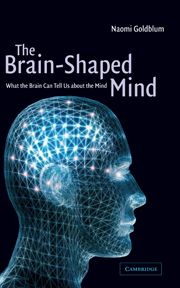Book contents
- Frontmatter
- Contents
- Preface
- Figure permissions and acknowledgments
- 1 Introduction
- 2 What the brain cannot tell us about the mind
- 3 How neurons form networks
- 4 Theories and models of how the mind functions
- 5 What are connectionist networks?
- 6 How our networks learn
- 7 Connecting the networks: how different things are related
- 8 Evidence for connectionist models
- 9 Two different types of memory
- 10 Coping with disaster
- 11 Practical implications
- 12 Criticism of connectionist theory
- Annotated references and suggested readings
- Index
11 - Practical implications
Published online by Cambridge University Press: 02 December 2009
- Frontmatter
- Contents
- Preface
- Figure permissions and acknowledgments
- 1 Introduction
- 2 What the brain cannot tell us about the mind
- 3 How neurons form networks
- 4 Theories and models of how the mind functions
- 5 What are connectionist networks?
- 6 How our networks learn
- 7 Connecting the networks: how different things are related
- 8 Evidence for connectionist models
- 9 Two different types of memory
- 10 Coping with disaster
- 11 Practical implications
- 12 Criticism of connectionist theory
- Annotated references and suggested readings
- Index
Summary
Is there any way that all this new knowledge can help us in our daily life? In addition, is it possible that it might be of some use to psychologists in helping their clients?
Since we have spent most of the book starting with questions and looking for answers, let us try it the other way around now: Let us start with the answers and see what questions they can answer, as on the old television quiz show Jeopardy, which has recently been revived. There is a good reason for this, aside from the obvious one that I can avoid those questions I have no answers for. The deeper reason is that there are some questions that most of us don't think of asking at all, and starting with the answers may lead to some of these less obvious questions.
How to study more efficiently
The first answer is that the knowledge structures in our inner networks change very gradually when we provide them with new information. One obvious question to which this may provide an answer is “What is the best way to study new material?” What we have learned in this book is that our mental networks cannot handle large amounts of new information at once because they can make only small changes in the way our knowledge is organized. Thus the best way to learn new information is to study small amounts at a time and keep trying to think of ways to integrate it with what we already know.
- Type
- Chapter
- Information
- The Brain-Shaped MindWhat the Brain Can Tell Us About the Mind, pp. 108 - 115Publisher: Cambridge University PressPrint publication year: 2001



